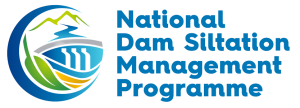Dam engineering and socio-ecological systems (SES)
This project aimed to develop tools and models to reduce siltation through engineering methods, as well as address ecological degradation in catchment areas. Additionally, the project involved creating a tool to classify dams and a model to identify various siltation management interventions within dam basins.
The Dam Storage Sustainability Scoring System (SSS) Tool is used to assess the sustainability level of a dam in terms of siltation risk. It ranks dams on a scale from non-sustainable to sustainable. A non-sustainable dam is one that is filled with sediment and can no longer function, while fully sustainable dams can serve both current and future generations. This tool helps determine the priority ranking of dams and the level of intervention needed.
A Dam Catchment Operations model (DCOM) is used for planning and designing new dams. It helps to incorporate siltation management interventions in the design phase and prioritize siltation management activities and interventions for existing dams. The model can also be used to identify various interventions and provides a cost-benefit analysis for each. This enables the user to determine which interventions are more feasible. It categorizes interventions into three zones: the catchment, the river system, and the dam. The model also quantifies the socio-economic benefits associated with extending the life of a dam, which helps to justify upstream interventions.

